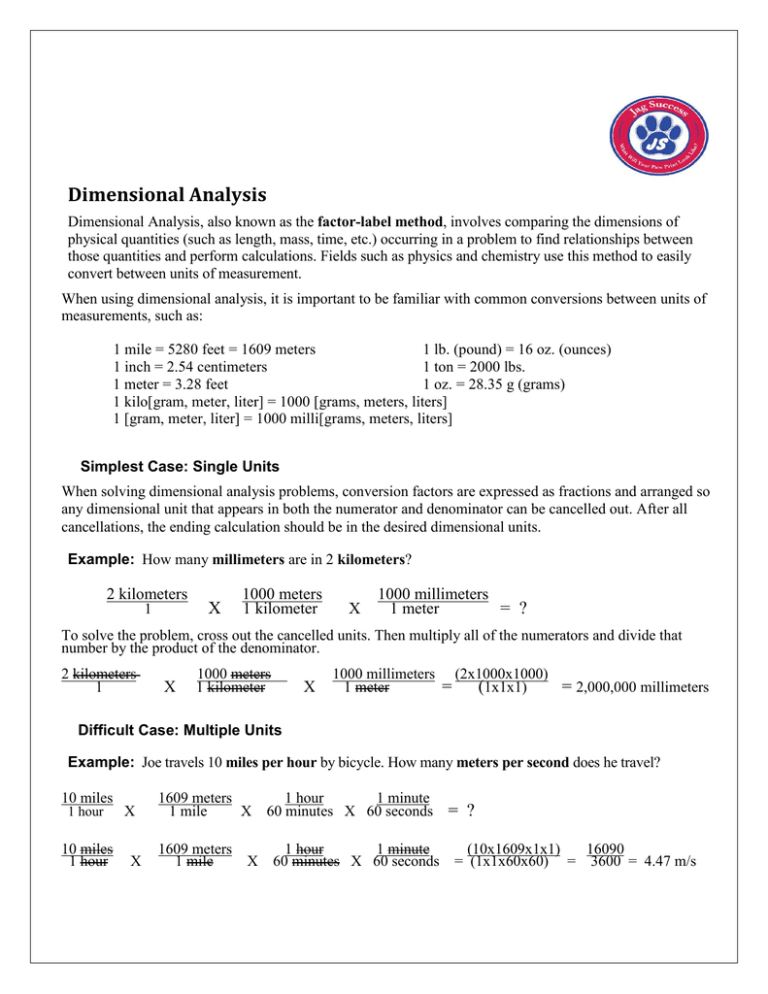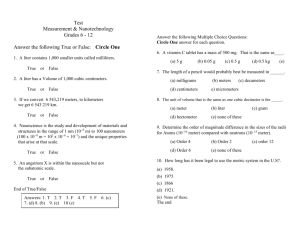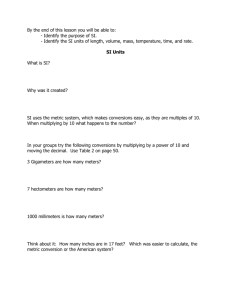Dimensional Analysis
advertisement

Dimensional Analysis Dimensional Analysis, also known as the factor-label method, involves comparing the dimensions of physical quantities (such as length, mass, time, etc.) occurring in a problem to find relationships between those quantities and perform calculations. Fields such as physics and chemistry use this method to easily convert between units of measurement. When using dimensional analysis, it is important to be familiar with common conversions between units of measurements, such as: 1 mile = 5280 feet = 1609 meters 1 lb. (pound) = 16 oz. (ounces) 1 inch = 2.54 centimeters 1 ton = 2000 lbs. 1 meter = 3.28 feet 1 oz. = 28.35 g (grams) 1 kilo[gram, meter, liter] = 1000 [grams, meters, liters] 1 [gram, meter, liter] = 1000 milli[grams, meters, liters] Simplest Case: Single Units When solving dimensional analysis problems, conversion factors are expressed as fractions and arranged so any dimensional unit that appears in both the numerator and denominator can be cancelled out. After all cancellations, the ending calculation should be in the desired dimensional units. Example: How many millimeters are in 2 kilometers? 2 kilometers 1 X 1000 meters 1 kilometer X 1000 millimeters 1 meter = ? To solve the problem, cross out the cancelled units. Then multiply all of the numerators and divide that number by the product of the denominator. 2 kilometers 1 X 1000 meters 1 kilometer X 1000 millimeters (2x1000x1000) 1 meter = (1x1x1) = 2,000,000 millimeters Difficult Case: Multiple Units Example: Joe travels 10 miles per hour by bicycle. How many meters per second does he travel? 10 miles 1 hour 10 miles 1 hour X X 1609 meters 1 mile X 1609 meters 1 mile X 1 hour 1 minute 60 minutes X 60 seconds 1 hour 1 minute 60 minutes X 60 seconds = ? (10x1609x1x1) 16090 = (1x1x60x60) = 3600 = 4.47 m/s






